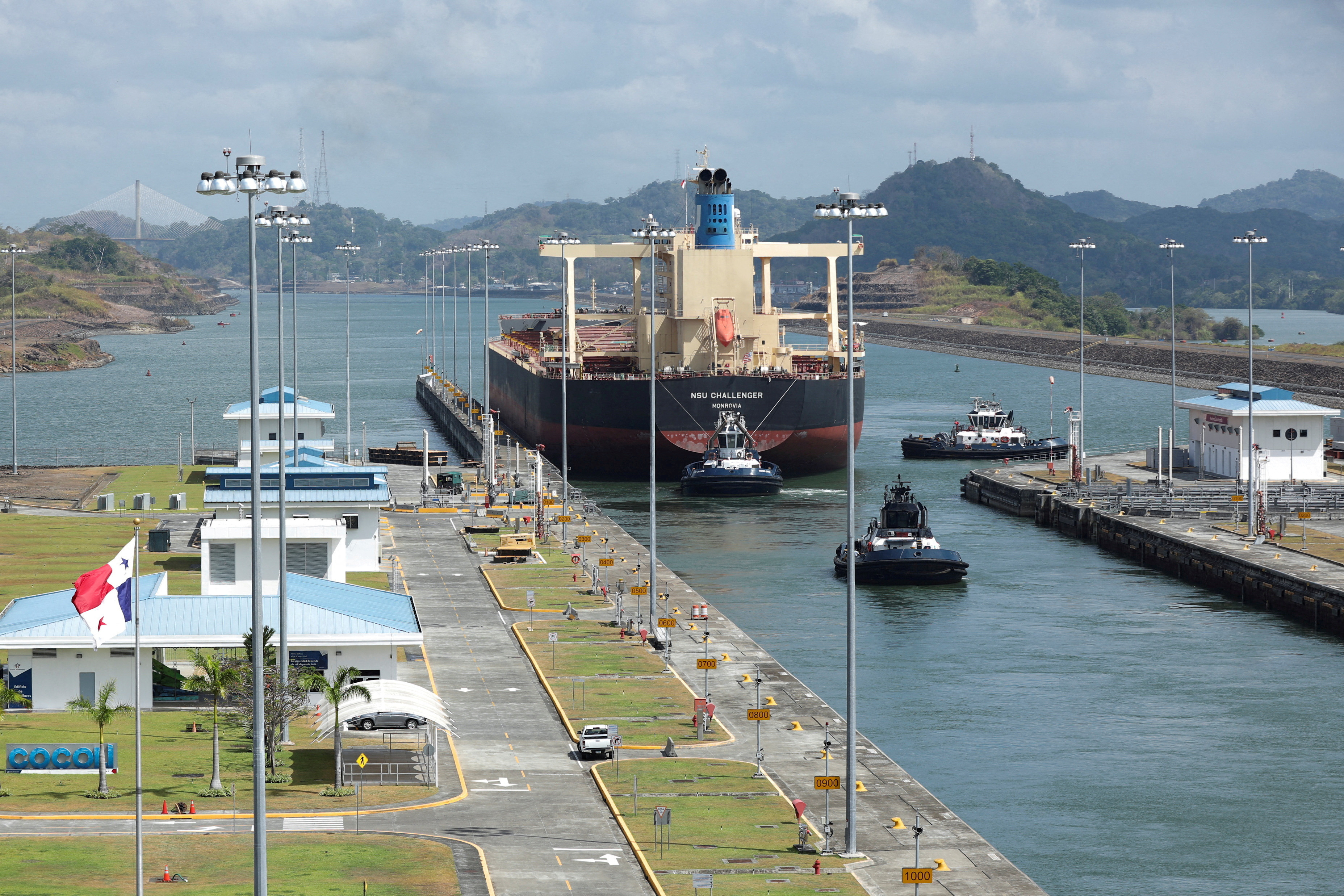

Monrovia NSU CHALLENGER bulk carrier transits the expanded canal through Cocoli Locks at the Panama Canal, on the outskirts of Panama City, Panama April 19, 2023. REUTERS/Aris Martinez/File Photo Acquire Licensing Rights
PANAMA CITY, Aug 16 (Reuters) – The Panama Canal Authority on Wednesday notified shippers it is extending through Sept. 2 restrictions for vessels to transit through the waterway and keeping the number of vessels authorized to pass per day to a maximum of 32.
The Canal restrictions, implemented in recent months as the rainy season in Panama has come late this year, could add more pressure on consumer goods prices, according to maritime firms and experts, as delays and extra fees add to shipping costs.
The Panama Canal is important for moving consumer goods from Asia to the United States, especially ahead of peak selling seasons like Christmas. It also allows faster transportation of U.S. commodities to Asia and South America’s Pacific Coast.
On Wednesday, there were a total of 131 vessels with and without reservations lining up to transit, fewer than the 161 ships reported a week ago, according to official data.
The bottleneck easing follows more slots opened last week by the Canal Authority for non booked vessels.
“In light of the prolonged effects of the dry season … the Panama Canal is extending booking condition 3 in order to continue to alleviate congestion for ships already in queue to transit or in route, who were unable to secure reservations beforehand,” the Canal’s authority told Reuters by email.
Under the current measures, vessels cannot exceed a maximum draft of 44 feet (13.41 meters). The Canal is allowing up to 14 daily reservations to pass through the old locks, used by smaller ships, and 10 daily transits for the new bigger locks.
Vessels that arrive without reservation have access to the remaining eight passage slots per day.
The Canal also is maintaining a suspension of extraordinary auctions for transit slots in both locks through Sep. 2.
In normal circumstances, 36 vessels in total are authorized to pass the Canal per day this time of the year, but prolonged drought has forced restrictions to use the navigation channel and the locks.
“Demand remains high, which proves that the Panama Canal is still competitive in most segments, even with measures taken to save water,” the authority added.
The Panama Canal has a 40%-market share of containers moving from Northeast Asia to the U.S. East Coast.
Reporting by Elida Moreno and Marianna Parraga; editing by Gary McWilliams and Grant McCool
Our Standards: The Thomson Reuters Trust Principles.
Focused on energy-related sanctions, corruption and money laundering with 20 years of experience covering Latin America’s oil and gas industries. Born in Venezuela and based in Houston, she is author of the book “Oro Rojo” about Venezuela’s troubled state-run company PDVSA and Mom to three boys.